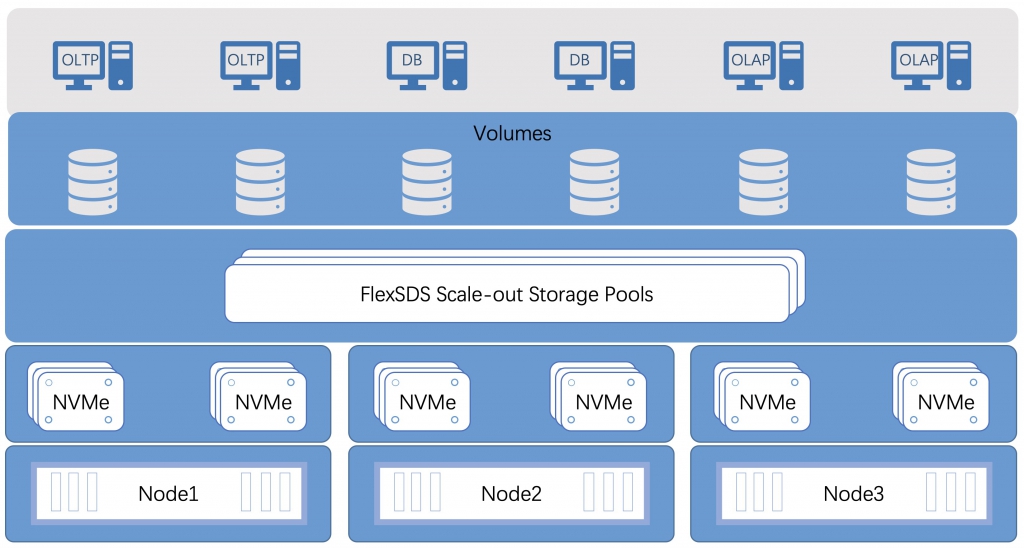Supercharged with NVMe and RDMA, intelligent and world-leading software stack, FlexSDS unleashes the full potential of flash, which provide every application with the ultimate in user experience, especially for database applications, FlexSDS provides high bandwidth and extreme low latency, those characters are most important things for a database storage.
Using the FlexSDS for database, as it can provide very high performance than database needs, you possibly got:
1. Run a full table scan without affecting index seek performance.
2. Concurrently run OLTP & OLAP on the same instance without any impact on performance.
3. Ensure that bulk load does not affect online queries.
4. Run multiple batch jobs during the day.
That means 10X faster in table & partition scans, index seek times, resulting in shorter batch job completion compared to traditional storage and considerably more transaction per second (TPS), and drop down the in overall operational TCO.
FlexSDS providing storage service via standard, RDMA enabled block interface like NVMe-oF, iSER (RDMA extension for iSCSI), and TCP based iSCSI, it will support all type of Database constructed on block/file level storage. Like: SQL Server, Oracle, DB2, MongoDB, etc.

It’s a software-only solution that runs on industry-standard hardware (any x86 based machines). It supports unlimited capacity per node and up to 2 PB of each storage pools. It could be external storage or HCI storage for private and hybrid cloud, by providing thin provisioning volume, log structured volume or RAW volumes, and export them over SAN protocol.
For working in private and hybrid cloud FlexSDS brings the ability to run any application at any scale, fast time-to-value, and non-disruptive scale-up or scale-out.
FlexSDS other Key features for Database include:
support NVMe SSD (Kernel-bypass), RDMA (Infiniband, RoCE, and iWarp), fully support all-flash-array.
Fast deployment and scaling of storage resources, and dynamic workload scaling and balancing.
Designed for next generation hardware, kernel-bypass, lock-free model, zero-mem-copy, high CPU cache optimize to provide extreme low latency.
Parallel and high concurrent I/O technology and high utilization of storage and network resources.
multiple node and data copies, high availability and auto-recovery.
efficient asynchronous replication
Low total cost of ownership (TCO)
single-pane management.
supports up to 1024 server nodes and can offer block service to Windows Hyper-V, VMware vSphere, Citrix XenServer or KVM-qemu hypervisor.
Protocol supports: iSCSI, iSER, and NVMe over Fabrics
unlimited space-optimized snapshots and clones, periodic or continuous asynchronous long-distance replication.
